Dr. Mariia Lepneva conducted fieldwork in China from March 16 to April 5, 2025, as part of her FWO-funded postdoctoral project, “Vinaya Revival on Baohua Mountain in Ming–Qing China.” The primary objectives of this research trip were threefold: to strengthen academic ties with colleagues in Chinese institutions, to visit monasteries associated with the Vinaya (monastic discipline and rituals) tradition during the seventeenth century, and to collect both primary and secondary sources for ongoing research. Further details can be found in Dr. Lepneva’s report below.
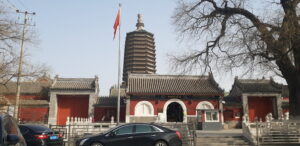
The first stop on my journey was Beijing, where I stayed from March 16 to 23. During this time, I was able to visit all six monasteries that conducted monastic ordinations during the late Ming and early Qing periods: Fayuan 法源寺, Guangji 广济寺, Guanghua 广化寺, Tanzhe 潭柘寺, Jietai 戒台寺, and Tianning 天宁寺. Fayuan and Guangji Monasteries experienced a relatively swift revival following the implementation of the Reform and Opening-Up policy in the late 1970s. These sites played important roles in fostering unofficial ties with Buddhist countries across Asia, as the People’s Republic of China sought broader international recognition. As a result, both monasteries became repositories of cultural artifacts. Guanghua Monastery is usually closed to the public; however, I had the rare opportunity to enter during a religious festival celebrating the birthday of Bodhisattva Samantabhadra. As for Tianning Monastery, only the pagoda courtyard remains, now reduced to about one-tenth of its original size. Interestingly, the site once functioned as a factory for producing gramophone records, but it has since been repurposed as a nunnery.
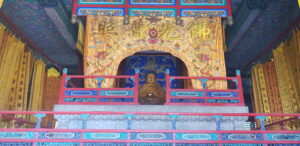
Located in the Western Hills, about an hour’s drive from central Beijing, Tanzhe and Jietai Monasteries have become popular weekend destinations for residents of the capital. Although managed by tourism companies, both monasteries are still home to active monastic communities. Each site preserves a historical ordination platform, though these are no longer in use. Currently, monastic ordinations in the capital region are only permitted at Baipu Monastery 白瀑寺, located in the Mentougou district, with the next ordination scheduled for June 2025.
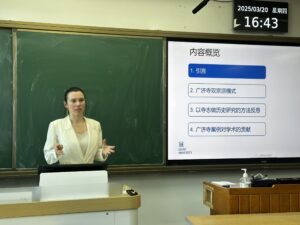
During my stay in Beijing, I engaged in a number of fruitful scholarly exchanges. Most notably, I delivered a lecture at Peking University, hosted by Professor Wang Song 王颂. In my presentation, I discussed the institutional transformation of Guangji Monastery during the early Qing dynasty, highlighting the emergence of a new power structure that elevated the role of Vinaya monks.
In addition, I had the opportunity to meet with several renowned scholars, such as Professor Sheng Kai 圣凯 of Qinghua University and Professor Xuan Fang 宣方 of Renmin University, as well as Professor Ju Xi 鞠熙 of Beijing Normal University, who is co-leading a project on publishing all stele inscriptions within the inner city walls of Beijing.
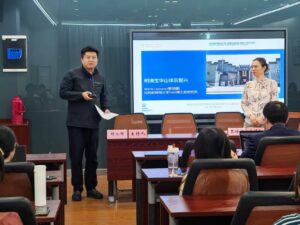
The second stop on my journey was Nanjing, where I stayed from March 23 to 30, including a one-day visit to Shanghai on March 26. Both Nanjing and Shanghai Universities maintain joint teaching programs with our Department of Languages and Cultures, so I was especially pleased to take this opportunity to strengthen ties with our academic partners in both cities.
At Nanjing University, I delivered a lecture on the conceptualization of the Vinaya tradition of Baohua Mountain by its seventeenth-century abbot. The event was hosted by Professor Hu Yonghui 胡永辉, the coordinator of the university’s cooperation with Ghent. It was also a great pleasure to reconnect with several PhD students from Nanjing University whom I had previously met in Ghent during their exchange year.
In addition to my academic activities at Nanjing University, I also visited Professor Wang Jianguang 王建光 at Nanjing Agricultural University. A leading expert on the history of the Vinaya tradition in China, Professor Wang provided valuable insights relevant to my research and also shared that his new book, Continuation of the General History of Vinaya School in China 中国律宗通史续篇, will soon be published as part of Jiechuang Buddhist Studies Series 戒幢佛学论丛. During my visit to Shanghai, I met with Professor Cheng Qing 成庆 of Shanghai University, who is currently serving as co-promoter of a project focused on publishing rare Buddhist sources from the early seventeenth century.
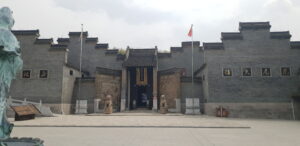
With the kind help of my new and old friends in Nanjing, I was able to visit the major site I am investigating within the framework of my current research project: Baohua Mountain. Longchang Monastery 隆昌寺 it houses is still a well-know Vinaya centre, which hold regular monastic ordinations and supplies staff for similar ceremonies elsewhere in China. I was pleased to learn that the resident monastic community is actively engaged in collecting, preserving, and publishing materials related to the monastery’s history, Vinaya studies, and ordination practices.
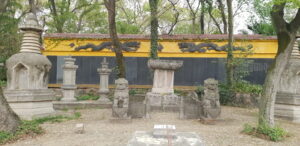
On the same day, I explored the pagoda yard of Tianlong Monastery 天隆寺, where one can see the pagoda of the famous reviver of monastic ordinations in the early seventeenth century, Guxin Ruxin 古心如馨 (1541-1616) (the structure likely dates to a renovation carried out in the early twentieth century). I also visited Jiming Monastery 鸡鸣寺 and Qixia Monastery 栖霞寺, which currently host female and male Buddhist seminaries, respectively. The library of Jiming Monastery is managed by Nanjing Normal University and has a catalogue available online.
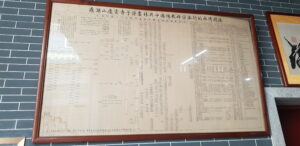
The final stop of my fieldwork trip was Guangzhou, where I met with two scholars whose work has been particularly relevant to my research. The first was Dr. Li Fubiao 李福标 of the library of Sun Yat-sen University, whose pioneering studies on monastic ordinations in seventeenth-century Guangzhou—and the broader Lingnan (southern China) region—have been invaluable. The second was Professor Zhang Dewei 张德伟, author of the influential monograph Thriving in Crisis: Buddhism and Political Disruption in China, 1522–1620, which has long served as a major source of inspiration for my own work.
Professor Zhang hosted my talk at Jinan University, where I presented an analysis of late Ming and Qing monastic networks. With the generous support of both colleagues, I visited Dinghu Mountain 鼎湖山, a key center of Vinaya studies in southern China during the seventeenth century. I also had the opportunity to visit several historic monasteries within the city of Guangzhou, including Guangxiao Monastery 光孝寺, Wuzhuo Temple 无着庵, and Haichuang Monastery 海幢寺.